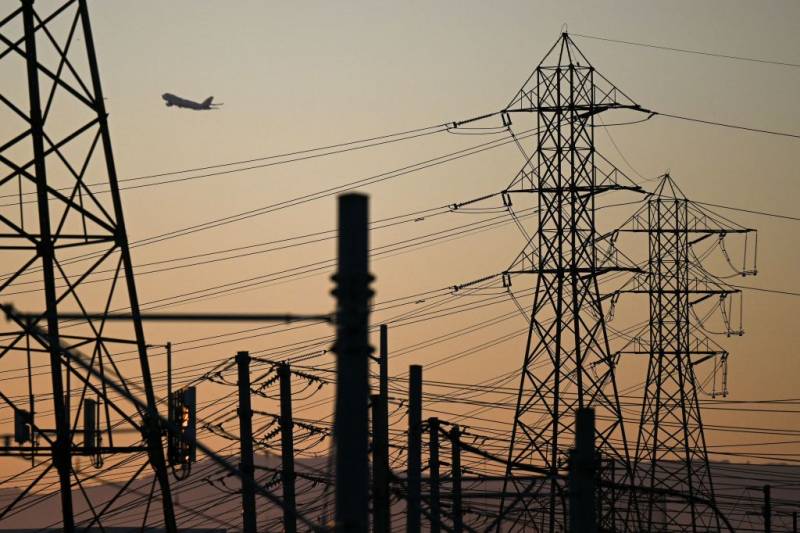Last week, California struggled under one of the worst heat waves in written history. Several cities across the state, including San Jose and Redwood City, shot through record-breaking temperatures. With the heat and demand for air conditioning, the state’s energy grid almost couldn’t hold. But thanks to a text telling us: “Power interruptions may occur unless you take action,” residents and businesses turned off lights, unplugged devices and kept the power humming. But as heat waves are projected to become more frequent, more intense, and longer-lasting under climate change, can California’s power grid handle it? We’ll be talking about how California’s power grid works, how it’s adapting and how it performed during the heat wave.
The Mysteries of California’s Electric Grid

An aircraft takes off from Los Angeles International Airport (LAX) behind electric power lines at sunset. (Photo by PATRICK T. FALLON/AFP via Getty Images)
Guests:
Alexandra (Sascha) von Meier, independent consultant, she was Director of Electric Grid Research at the California Institute for Energy and Environment for a decade retired professor UC Berkeley electrical engineering.
Duncan Callaway, associate professor of Energy and Resources, UC Berkeley; faculty scientist, Lawrence Berkeley National Laboratory
Ivan Penn, energy correspondent, New York Times
Sponsored